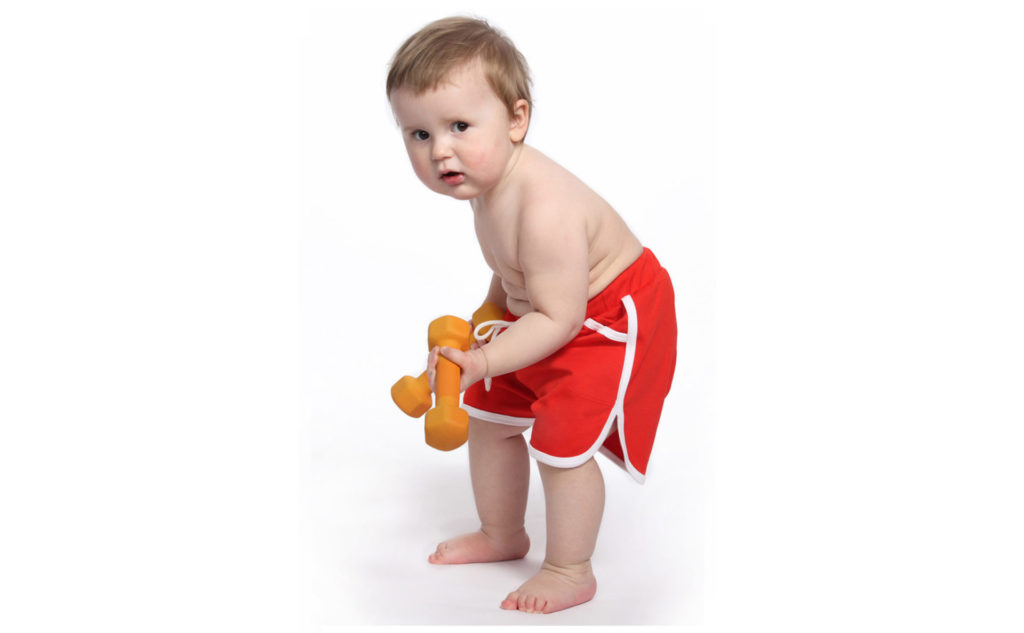
Deadlift
Look at this baby’s deadlift! Zero core activation. Rounded back. Pronated feet. Who holds dumbbells like that? Get a hex bar for Pete’s sake. And put on a shirt. Lay off the dairy products and do a plank.
A deadlift is serious business. It’s a lift you have to earn. Skip the foundation and you are tempting injury (i.e. herniated disc, hamstring strain, shoulder strain). Everyone needs to be able to execute a good deadlift. Unlike a swing or a snatch, deadlifts feature regularly in our movement rotation.
When the load is minor, poor form isn’t such a danger, but the risk of injury increases with the load. We all know what happens when Uncle Bob tries to carry the old microwave up from the basement for the yard sale. Uncle Bob with the diastasis and bad knee. Uncle Bob who jokes that his six-pack came from Budweiser. Too bad he won’t be able to enjoy a frosty beer when he’s on prescription pain killers.
I never start a client with a bi-lateral deadlift. I need to know their hip stabilizers are working and that they can maintain a neutral spine before progressing to such an important Olympic lift. That’s where a unilateral deadlift (nickname: “stork”) is invaluable. Every single one of my clients does stork. It can take some time for a client to demonstrate a respectable stork. I don’t let bad form slide, but stork is one exercise in particular that I drill relentlessly because it corrects so many problems. Good stork execution prevents knee pain, shin splints, plantar fasciitis, and low back pain. Side bonus…it makes your butt look killer. It is also the stepping stone to a deadlift.
A deadlift takes precision to teach because the lower extremities need to move in a coordinated ballet, while the core and upper extremities need to brace to prevent unauthorized movement. It requires strength and flexibility. The movement pattern needs to be neurologically locked-in. It should feel like one crisp movement, not several disjointed commands. You have to prime the body for the lift and wait for the brain to grant permission.
